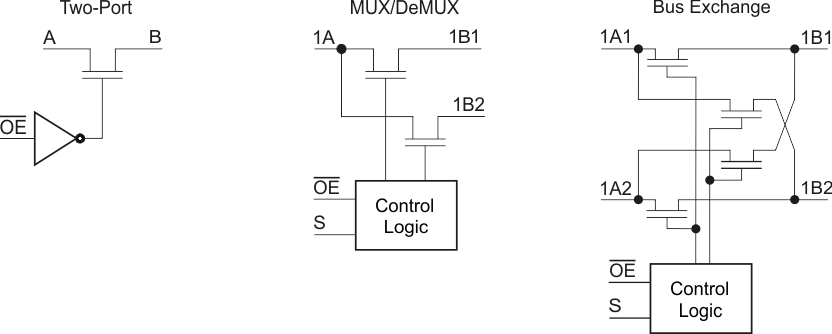SCDA008C June 2021 – November 2021 CD4052B , TS3A225E , TS3A44159
- Trademarks
- 1Introduction
- 2Semiconductor Switches
- 3Basic Signal-Switch Structures
- 4Key Concerns in Digital-Switch Applications
- 5Signal Switch Families
- 6Applications
- 7Conclusion
- 8References
- 9Revision History
-
A Test
Measurement Circuits
- A.1 Measurement Setup for ron
- A.2 Measurement Setup for VO vs VI Characteristics
- A.3 Voltage-Time Waveform Measurement (Switch On)
- A.4 Voltage-Time Waveform Measurement (Switch Off)
- A.5 Output-Skew Measurement
- A.6 Simulation Setup for Undershoot Measurement
- A.7 Laboratory Setup for Attenuation Measurement
- A.8 Laboratory Setup for Off Isolation Measurement
- A.9 Laboratory Setup for Crosstalk Measurement
6 Applications
The digital bus switches offered in TI’s portfolio of devices are offered in different configurations. Figure 6-1 shows the three main configurations of bus switches: a two-port configuration (A and B are either connected or isolated), a MUX/deMUX configuration (1A is connected either to 1B1 or 1B2), or bus exchange (buses 1 and 2 are either passed unchanged or are exchanged with each other).
 Figure 6-1 Bus
Switch Functions
Figure 6-1 Bus
Switch Functions